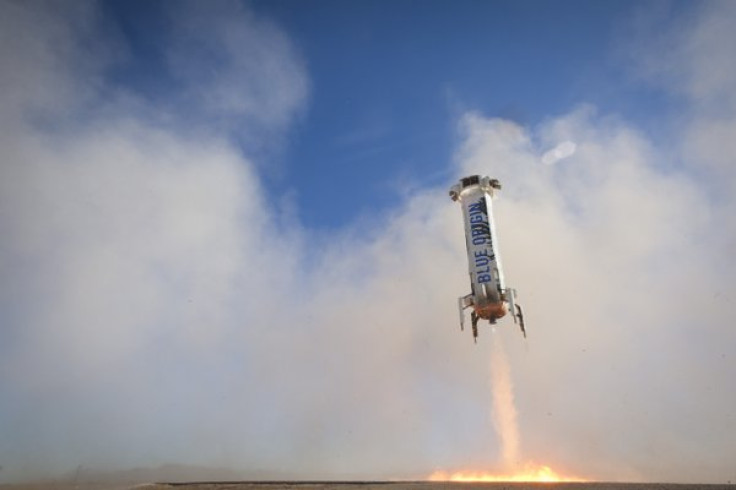Blue Origin's New Shepard: Video shows third successful rocket launch and landing by Jeff Bezos' firm

Amazon CEO Jeff Bezos' private space company Blue Origin has successfully launched and landed its New Shepard rocket for the third time in a row. The rocket was first launched in November 2015 and reused in January 2016 before again being launched on 2 April.
Blue Origin has shared an edited version of the footage of the New Shepard's launch, which showcases both ground as well as aerial shots of the launch. The rocket safely landed on Earth after making its suborbital journey.
The rocket also carried the unmanned capsule crew, which after making its way into space, detached itself and made its way back to Earth via a parachute, while the rocket itself made its separate third vertical landing back on Blue Origin's Texas test site.
Readying Crew Capsule for flt. Clear skies in TX.
— Jeff Bezos (@JeffBezos) April 2, 2016
Tracking for morning launch. #LaunchLandRepeat @BlueOrigin pic.twitter.com/X22DBlf9ZE
Bezos took to Twitter to update space enthusiasts about the launch. He also explained in one of his tweets prior to the launch that this particular initiative was slightly more complicated than the past two launches of the New Shepard, given that the rocket's BE-3 engine would need to commence functioning immediately after the descent of the rocket and provide high thrust for the rocket to successfully and safely land vertically.
Crew Capsule is locked & ready for flt. Tortoises mark successful CC missions. #LaunchLandRepeat @BlueOrigin pic.twitter.com/akPaP9EFIu
— Jeff Bezos (@JeffBezos) April 2, 2016
Liftoff and New Shepard is climbing to apogee. @BlueOrigin
— Jeff Bezos (@JeffBezos) April 2, 2016
Flawless BE-3 restart and perfect booster landing. CC chutes
— Jeff Bezos (@JeffBezos) April 2, 2016
deployed. @BlueOrigin
Blue Origin said the New Shepard fired into space to an altitude of around 3,600 feet. It is important to note that it is in this particular altitude when the rocket's new BE-3 engine was slated to restart, failing which the rocket would have made impact with the ground in six seconds.
CC touchdown confirmed. #LaunchLandRepeat @BlueOrigin
— Jeff Bezos (@JeffBezos) April 2, 2016
Although the rocket contained no human crew, it did carry a payload — two microgravity experiments, one from the University of Central Florida and the other from the Southwest Research Institute. While the former is testing how a layer of dust reacts when collided with marble in microgravity, the latter will explore the movement of rocky soil in microgravity conditions.
Bezos hopes to launch commercial tourist spaceflights in 2018, provided future testing progresses in a successful and safe manner.
© Copyright IBTimes 2024. All rights reserved.






